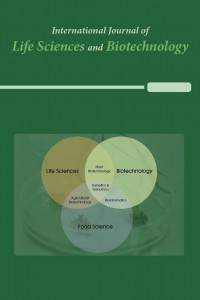Effects and Quantıty Ranges of Some Auxıns on Embryogenıc Callus Inductıon From Upland Rıce Cultıvars: An Overview
Effects and Quantıty Ranges of Some Auxıns on Embryogenıc Callus Inductıon From Upland Rıce Cultıvars: An Overview
UPLAND RICE, CALLUS INDUCTION, 24-D, NAA AUXIN,
___
- REFERENCE1: • Dr. Zainab Adamu Abubakar, Senior lecturer Gombe State University, 127, Gombe. Nigeria. Email: zeepha22@gmail.com Mobile phone number: +2348065631927
- REFERENCE2; Dr. Abdulkarim Ali Deba, Lecturer ATBU, NIGERIA. Email: abdulkarimalideba@gmail.com
- Yayın Aralığı: Yılda 3 Sayı
- Başlangıç: 2018
- Yayıncı: International Society of Academicians
An investigation of the probiotic properties of Lactobacillus fermentum
Serap ÇETİNKAYA, Samet KOCABAY, Ali YENİDUNYA
Antimicrobial Activity of Musa acuminata Peel Extract against Gram-Positive Bacteria
Yashini SUBRAMANİAM, Nurzafirah MAZLAN, Halijah HASSAN, Juju Nakasha JAAFAR, Siti Marwanis ANUA, Thung Tze YOUNG, Safaa Najah Saud AL-HUMAİRİ
Williams CHİNTEM D.G., İsmaila Yada SUDİ, Manaseh SILAS
Hazrina HASAN, Fazilah ABD MANAN
Biyoteknolojik Tekniklerle Mikrobiyal Vitamin Üretimi
Uşak İli Sert Çekirdekli Meyve Üreticilerinin Fitopatolojik Sorunlara Yaklaşımlarının Belirlenmesi
Altınay ŞİMŞEK, Havva DİNLER, Sinan DURU
Hafedh AL-MOALEMİ, Wahid ALTOWAYTİ, Siti Pauliena MOHD BOHARİ
Orthologous Revelation between Elaeis guineensis, Arabidopsis thaliana and Solanum lycopersicum
Nurul Hidayah SAMSULRİZAL, Muhammad HAZUKİ, Nur Sabrina AHMAD AZMİ, Zatty Syamimi MAT SAİD, Nurnıwalıs ABDUL WAHAB, Zubaidah RAMLI
